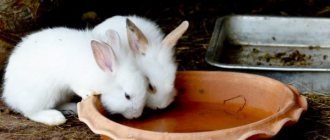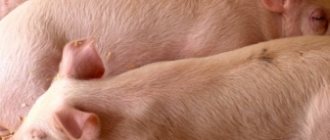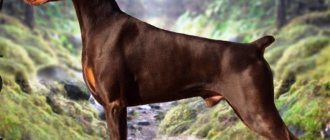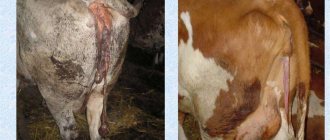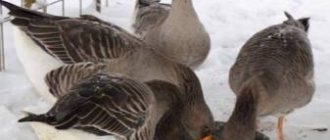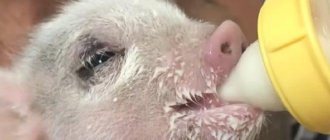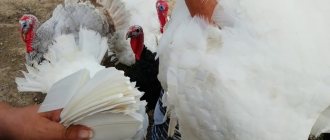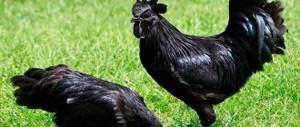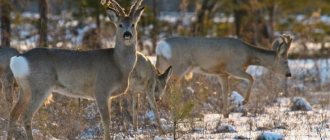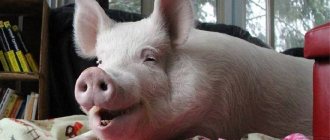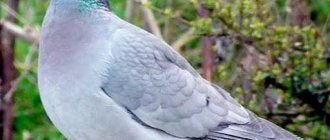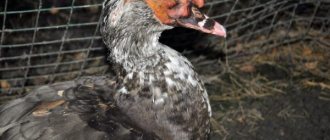How many hectares of land do you need for 1 cow?
To have enough feed for livestock, you need to sow the land. The structure of cultivated areas on arable land is influenced by many factors. Some of the most significant are the specialization of the farm, the natural and weather conditions of the region, the plowed area of agricultural land, and the area of pastures.
Consequently, the percentage of different forage crops will differ for each farm:
- For beef cows:
- grains – 36-40%;
- perennial grasses – 41-45%;
- annual grasses and silage – 12-15%.
- For dairy cows:
- grains – 33-36%,
- perennial grasses – 40-44%;
- annual grasses and silage – 14-17%;
- root crops – 2-3%.
Based on this structure, the recommended average crop area per head should be:
- grains - 0.37-0.50 hectares;
- perennial grasses - 0.43-0.60 hectares;
- silos - 0.17-0.22 hectares;
- root crops – 0.03-0.04 hectares4.
In the end, it turns out that at least 1 hectare of land per head of cow.
Organization of pastures and grazing of cattle in the summer
Proper organization of feeding animals in the summer plays a huge role in increasing productivity and strengthening their health. In the summer, the leading farms of the republic receive 60-70% of the annual milk production.
The main food in summer is grass. Green grass is a cheap source of essential nutrients needed by animals. According to laboratory tests, the herb is the most complete, rich in minerals and vitamins. So, for example, 1 kg of grass contains: 0.25-0.27 feed. units; EKE – 0.33; crude protein content – 0.48 g, including digestible protein – 30 g; starch – 7.20 g; sugar – 23 grams and carotene – 35 mg. Cattle's need for green feed is 60-70 kg per day per cow, and for the entire summer period it is about 6-7 tons.
Sources of green fodder for farms and the population are natural and cultivated pastures. Pasture feeding of cattle is the most effective both in terms of obtaining cheap milk and for animal health. Science and practice have proven that dairy cows should be provided with highly productive pastures at the rate of 0.25-0.3 hectares per head. At the same time, it is necessary to organize their correct use - a corral system for grazing livestock. Therefore, it is recommended to place pastures directly near a livestock complex or summer camp so that the movement of livestock from the livestock premises to the pasture is no more than 1.5-2 km.
Pasture maintenance is especially important for raising replacement young cattle. Economic indicators of the leading farms of the republic indicate that when keeping young animals on pasture, labor costs are reduced by 2 times compared to keeping them in stalls and feeding green mass in feeders. When kept on pasture, young animals move freely in the air and develop better, so ultimately these animals are healthier than those kept in stalls.
Scientists have proven that the best results can be obtained when 3/4 of the annual growth is obtained on pasture. Proper feeding of young animals is important in increasing meat production and improving its quality. Feeding is affordable and profitable from an economic point of view, because green food is complete and cheapest. Therefore, with proper organization, the live weight of young animals increases by 65-70%.
To make the most of pastures, they should be divided into lawns and grazing alternately. For a herd of 100 young cattle for various types of pastures, we can recommend approximately the following areas:
- sown perennial grasses 2.5-3.5 ha;
- dry pastures 7-12 hectares;
- local pastures 9-15 hectares.
Pasture areas should be located at a distance of no more than 2 km from the watering place. The feeding of young animals usually lasts 130-150 days. The need of young animals for green mass depends on the quality of the grass on the pasture. On average, to obtain one kilogram of gain, feeding young animals with a live weight of 100-150 kg must consume about 18-20 kg of green grass per day.
Floodplain lands are of great value in feed production. However, they are not sufficiently used for grazing livestock and obtaining green fodder. Today, the task is to make wider use of these feed production reserves and increase their yield.
At the same time, mowing-pasture and pen-portioned use of grass stands requires large expenses for the creation of pastures. But these costs are incurred once every 4-5 years and are recouped many times over in net income. Animal grazing has a positive effect on reproductive functions and significantly increases the period of use of dairy cows. In our environment, grazing beef cattle on improved natural pastures provides the highest return on investment. The investment in grazing pays off 5-10 times.
Farms used to use cultivated pastures. But in recent years they have been used haphazardly and with great overload. As a result, wormwood, fescue, tartar and other weeds were introduced into the grass of pastures, instead of sown grasses. Currently, to satisfy animals with feed, it is necessary to recreate cultivated pastures.
Cultivated pastures are forage lands created by superficial or radical improvement of natural forage lands or grassing of arable land, on which pen-portioned grazing of livestock and care measures are carried out in a certain sequence to help maintain high productive longevity. The creation of cultivated pastures for the superficial improvement of natural forage lands is possible in river floodplains and in areas of meadows where the grass stand contains a significant amount of valuable forage plants. One of the main conditions determining the high yield of such grass stands is the correct selection of grass species, which must correspond to the location and soil fertility. For example, in the central parts of river floodplains, slopes and bottoms of ravines, and watersheds, it is recommended to sow meadow clover, yellow alfalfa, awnless brome, meadow fescue, meadow timothy and other forage crops.
The productivity of cultivated pastures increases if irrigation is used. Irrigation of legume-grass grass stands is most effective when the content of legumes is high (50% and above). To increase irrigation efficiency, it is necessary to periodically re-weed old-growth grass stands. The productive longevity of the recommended grass mixtures on farms is determined by four to five years of use.
At the same time, grass stands of cultivated pastures must be used for removal only from the second year of grass life, because This period is necessary for the formation of a strong turf, and subsequent grazing will not negatively affect the further productivity of pastures.
One of the main elements in the technology of proper use of pastures is compliance with the timing, frequency and degree of grazing. In spring, we recommend grazing areas with a predominance of lower grasses and clover at a height of no lower than 10 cm, and with a predominance of higher grasses, such as brome and fescue, at a height of no lower than 15 cm.
Usually, they begin grazing cattle from those paddocks where they finished grazing earlier the previous fall. Grazing of animals in the paddock must be completed when the height of root residues on short grass stands is 3-4 cm, and on tall grass stands at 4-5 cm. The second and subsequent grazing cycles must be carried out depending on the composition of the grass stand, after approximately 25-30 days at height for short-grass plants 15-20 cm, and for tall-grass plants – 20-30 cm. Thus, 3-4 grazing cycles can be carried out during the grazing period. The average yield of green mass in one cycle is 60-65 c/ha.
Proper tillage, snow retention, and creation of forest belts are highly effective methods for accumulating moisture in the soil. But it is not possible to completely provide plants with moisture on the farm. In recent years, unfavorable dry weather conditions have been observed in the Trans-Ural and North-Eastern forest-steppe, where May-June droughts reach 50-60%. Irrigation of crops in these and other areas where water is scarce is an extremely effective measure. On average, the increase in yield from irrigation of perennial grasses ranges from 250 to 320%.
Ardashirov S.S., senior researcher; Sadykova R.R., junior researcher. FGBNU Bashkir Scientific Research Institute of Agriculture. 04/22/2015
Livestock → Public pasture
The “first day” happened in 1992, when Ivan Petrovich’s father decided to become a farmer. As often happened, the collective farm prevented the allocation of land shares, and with such tenacity that they had to call the Don-TR film crew. The story was shown on television, and this apparently had an effect: the Sinners received the required 17 hectares as their property.
You may like => Is Reprimand Removed In The Army
As it turned out later, winning the battle did not mean winning the war. Although the land is leased from the farmer, everyone uses it. There are two roads leading through the pasture to the pond. One exists “historically”, and the other, having hired a grader, was unscrupulously laid by local fishermen. People come along this road to fish and relax by the pond. Once they hit a sheep, another time they hit a shepherd dog. Traces of fishermen are visible everywhere: heaps of garbage, burnt reeds, warehouses of branches and wood that were used to strengthen the shore.
Rules for keeping cattle
Approved veterinary rules for keeping cattle make it possible to create optimal conditions for the normal existence of animals. They are based on the requirements for territory development, sewage system, microclimate, health monitoring, feeding, watering and milking.
According to the approved rules, the place where cattle are located must be surrounded by a solid fence. A sanitary checkpoint and a disinfection barrier are installed in each territory. Entry and exit of vehicles is carried out through specially designated gates. It is mandatory to organize a checkpoint to prevent unauthorized persons from entering the barn.
Farm or agricultural land is equipped with a sewerage system. It allows you to eliminate not only animal waste, but also eliminate precipitation. The premises where animals live are equipped with toilets. According to experts, it is advisable to provide a method for disinfecting manure.
To increase the level of animal performance, it is necessary to create a certain microclimate in the stalls. The premises are equipped with sufficient lighting and a ventilation system. The room must be dry and clean. The formation of condensation is completely eliminated. The optimal air temperature should not exceed 10-12 degrees with a humidity of 75-80%. The temperature must be observed and not allowed to fluctuate. At low temperatures, animals experience stress, which negatively affects their overall well-being.
Temperature conditions are extremely important
Special control is established over animals. The rearing of young animals is carried out according to special rules. Thus, animals must be provided with concentrated feed and plenty of drink according to the developed algorithm. This takes into account age requirements and physiological characteristics. Feeding is carried out using safe feed, which is fully consistent with the quality and provides the animal with the necessary amount of useful components. The feed is changed gradually, over 5-10 days.
Important! Water used for drinking must fully comply with sanitary standards and regulations. Its temperature is 8-12 degrees.
The best breeds for raising cattle on a private farm
The first task of a novice farmer is to choose an animal breed depending on the chosen direction.
For milk
The most common dairy breeds are:
- Holstein is a North American breed, popular on European farms, as well as in private farms in the post-Soviet space. Excellent quality of milk - fat content 3.7%, protein occupies 3.2%, the amount of milk from one individual per year is 6500–7000 kg.
- Jersey is one of the oldest, bred in Great Britain, and easily adapts to any climate. Despite the small milk yield of up to 3300 kg per year, milk is valued for its fat content and sweet taste; the best cream is obtained from it. Milk characteristics: fat content 5.8%, protein 4%, sugar 4.7%.
- The Simmental is an unpretentious breed, ideal for small farms. Adapted to temperate climates, does not require much feed. The quality of the milk is fat content 3.8%, protein 3.3%, sugar 4.8%, milk yield 3500 kg per year.
- Yaroslavl is a breed popular in private farms, productivity up to 5000 kg of milk per year, fat content 4%, protein 3.5%. The milk is sweet and contains 4.7% sugar.
For meat
The following breeds are considered the most productive in meat production:
- Hereford - famous for the delicate taste of marbled meat. The calf’s weight at birth is 26–34 kg, daily weight gain is 700–1200 g, slaughter age is 18 months. Weight: steers – 850–1000 kg, heifers – 550–650 kg; meat yield 62%.
- The Belgian Blue cow is considered the most productive; the meat can be called dietary due to the small amount of fat. At birth, the weight is about 50 kg, the daily weight gain is up to 1500 g. At 15 months of age, the average weight of a bull is 1100 kg, the weight of a heifer is 800 kg; meat yield at slaughter is 80%.
- The Kian breed comes from Italy and is considered one of the largest. The weight of the calf at birth is 48 kg, weight gain is up to 1400 g. At 15 months, the weight of the bull is 1300–1600 kg, the cow weighs up to 900 kg; meat yield 65%.
- Auliekolskaya - bred in Kazakhstan, marbled meat does not contain much fat. Newborn calves weigh 25 kg, daily weight gain is up to 1700 g. At the age of 16–18 months, the weight of a bull is 1050 kg, the weight of a heifer is 550 kg; meat yield 63%.
How to care
The skin and limbs of animals require systematic special care. You need to clean not only to get rid of dirt, but also to get rid of parasites. Thus, the general condition of the cow improves. This occurs by stimulating blood circulation and massaging the skin. These factors improve the animal’s appetite, which has a positive effect on milk production.
Cleaning is organized an hour before milking outside the milking room. Keeping a cow at home without grazing requires a particularly careful approach. On farms, a special portable vacuum cleaner is used. At home, tools can be scrapers, brushes and combs. The most contaminated places of the cow are the sides, tail, and legs. The limbs are washed with warm soapy water and wiped with prepared rags.
Caring for hooves and horns comes down to their systematic trimming. For this work, special hoof tongs and scissors should be used. In order to prevent possible injuries to the treated limbs, attention is paid to the cleanliness of the surface of walking areas. The garbage must be removed immediately.
Organizational matters
How to choose the right staff
To care for a livestock of 20 animals and at the same time comply with all veterinary and sanitary standards, one person will clearly not be enough. The farmer will need hired labor in the form of a couple of employees who have experience working with cows.
Main responsibilities of the staff:
- animal feeding;
- manure removal;
- cow care;
- maintaining order on the farm;
- making hay.
Farm staff
Livestock needs regular examinations and vaccinations: to do this, you need to find a qualified veterinarian who will carry out these important procedures. Before slaughter, temporary employees are hired who are experienced in performing the required work.
What do purchased livestock need?
The main rocks depending on the direction have already been described. It is worth saying here that with the right selection of breeds, you can achieve your goal in the shortest possible time. Improper maintenance of livestock leads to the fact that all the work will be completely in vain. Cows need constant care, proper maintenance, feed in the right quantity and water. If the listed points are not met, then nothing good will come of breeding.
Keeping bulls
Breeding bulls for meat as a business requires high-quality maintenance and care. During the warm season, they need daily walking. It is not recommended to keep such individuals in a stall all the time, although this way they gain weight very quickly. This method makes them aggressive and contributes to various diseases.
Setting up a paddock involves expenses for a beginning farmer. Accordingly, he must arrange the right place for walking, which must be constantly kept clean. This method produces very good quality beef. If the number of heads is quite impressive, then you will most likely need house helpers. The point of recruiting personnel and wages for it should be considered at the initial stage and when building a business plan.
If you still choose a method of keeping bulls on a leash, then you need to take care of high-quality equipment, as they can be aggressive. In the stall, individuals must be well secured. On the other hand, this method allows you to assess the condition of the animal, make various measurements, and veterinary examinations.
Breeding bulls as a business for the production of meat products in a pen requires less costs than housing in a stall. One of the reasons for this conclusion is that much fewer employees are needed to operate.
Animal food
For most farmers, it seems to be very difficult to determine how much feed a cow needs per day. The animal's diet includes hay, feed and flax seeds. All these components are used to make the total mass of bait. Without such a nutritional mixture, the animal will begin to lose weight and produce much less milk, and this will be a big blow to your business. For a novice entrepreneur, it is very important to know that the nutrition of a cow greatly affects the milk yield, and even the taste of the meat. When a cow eats poor quality hay, the milk may be bitter and tasteless. This will greatly affect income, because no one will buy low-quality products.
Of course, there are many nutritional mixtures for animals on sale, but their main food is still hay. Therefore, take the time to find out how much hay a cow needs per day for its normal development. Now there are certain standards of feed that one animal consumes per day. Based on them, one cow on average will eat 9–15 kg of hay.
True, the norm will not be stable in different seasons. After all, in the summer the livestock grazes and feeds in the meadows. Therefore, it is important to determine how much hay a cow needs for the winter, because if you stock up little feed, the animals will starve and the entire enterprise will suffer from this. According to experts, approximately seven tons of hay will be needed for one winter season. True, the figure is calculated only for a few months, so, for a year, store about 25 tons of hay for one individual. This is the main food for a cow and there is never too much of it; it is better to store a little more hay than you need.
Try to store hay and silage for the winter a little more than the required minimum
But the cow must also eat silage, because this also has a very positive effect on the quality of milk and is a very important type of bait. Remember, your main income comes from selling milk, so it is important to follow all nutritional rules to obtain good milk yield and high profits. In summer, hay reserves can be reduced by five tons, and silage reserves by about four tons . But Russia is not very rich in green meadows, and it is not always possible to find a suitable place for pasture. If the meadow is infertile, there is no way to reduce the supply of feed.
Barn cleaning and care
To prevent the udder from getting dirty, the bedding is changed as often as possible, as it gets dirty. Every day, cows are brushed and washed with warm water in the area adjacent to the udder. To prevent mastitis in heifers, bedding is placed in a deep, dense layer.
Combined breeding method
Keeping and breeding cattle at home for a novice farmer can be combined. This means that there will be individuals in the herd both for meat and for milk. There are mixed breeds of cows, bred by breeders and ready for both purposes.
Such universal breeds as Simmental, Lebedinsky, Swiss, Red Gorbatovsky, Kostroma are suitable for business. All of them are capable of achieving large body weight, and females produce an average milk yield of 3,000 to 5,000 kg per year. Almost every breed is capable of producing 50% of its weight for slaughter. The growth of calves is quite active and by six months they weigh quite impressively.
All of the listed animals have high levels of taste for meat and dairy products. This is a clear plus for a successful business.
